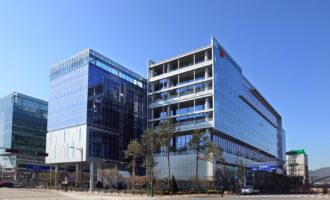Bosch joins Ko-HAF research initiative
Stuttgart, Germany, August 25, 2015 – Bosch has joined forces with a number of other suppliers, automakers, and public-sector partners to launch the “cooperative highly automated driving” (Ko-HAF) research initiative, which aims to push forward the development of automated driving. The publicly funded project will tackle the challenges of highly-automated driving, in which drivers no longer need to be constantly vigilant. But for this to happen, technical precautions are necessary. “Highly automated vehicles rely on information about their surroundings – information which supplements the data collected by their own sensors,” says Dr. Dieter Rödder, head of the future mobility systems unit at Bosch’s corporate research and advance engineering. Within the framework of the Ko-HAF project, Bosch has assumed primary responsibility for developing a backend solution for collecting and making available such information about a vehicle’s current surroundings, including the traffic infrastructure.
| Mobility Solutions is the largest Bosch Group business sector. In 2014, its sales came to 33.3 billion euros, or 68 percent of total group sales. This makes the Bosch Group one of the leading automotive suppliers. The Mobility Solutions business sector combines the group’s expertise in three mobility domains – automation, electrification, and connectivity – and offers its customers integrated mobility solutions. Its main areas of activity are injection technology and powertrain peripherals for internal-combustion engines, diverse solutions for powertrain electrification, vehicle safety systems, driver-assistance and automated functions, technology for user-friendly infotainment as well as car-to-car and Car2X communication, repair-shop concepts, and technology and services for the automotive aftermarket. Bosch has been responsible for important automotive innovations, such as electronic engine management, the ESP anti-skid system, and common-rail diesel technology.
The Bosch Group is a leading global supplier of technology and services. It employs roughly 360,000 associates worldwide (as per April 1, 2015). The company generated sales of 49 billion euros in 2014.* Its operations are divided into four business sectors: Mobility Solutions, Industrial Technology, Consumer Goods, and Energy and Building Technology. The Bosch Group comprises Robert Bosch GmbH and its roughly 440 subsidiary and regional companies in some 60 countries. Including its sales and service partners, Bosch is represented in roughly 150 countries. This worldwide development, manufacturing, and sales network is the foundation for further growth. In 2014, Bosch applied for some 4,600 patents worldwide. The Bosch Group’s strategic objective is to create solutions for a connected life. Bosch improves quality of life worldwide with products and services that are innovative and spark enthusiasm. In short, Bosch creates technology that is “Invented for life.” Further information is available online at www.bosch.com and www.bosch-press.com,http://twitter.com/BoschPresse. |









